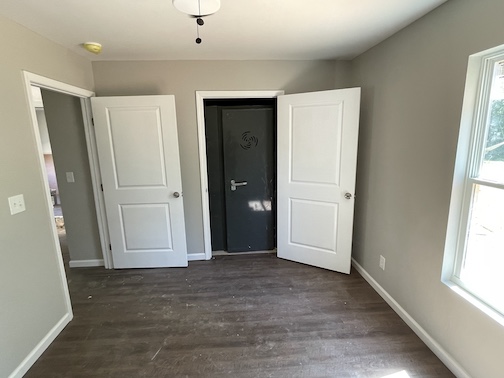CATEGORIES:
AWFUMC and SAS Add Storm Shelters to Disaster-Affected Areas
August 31, 2023

Natural disasters like tornadoes can wreak havoc on communities, leaving behind destruction and displacement. It’s been such an ongoing challenge in the service area of the Alabama-West Florida Conference of The United Methodist Church (AWFUMC) that the church created the Disaster Response and Recovery Ministry to assist after these natural disasters strike. The team typically responds to a community after a storm has hit, in some cases working with families who don’t have insurance coverage, building houses from the ground up.
The ministry programs train and deploy volunteer teams to begin the relief process of cleanup, debris removal, and tarping after first responders have been into the area. This allows the ministry to assess the damage and collect data to back up needs. Following this initial contact, they apply for grants to fund helping the community rebuild in the months that follow. According to the team, every area is different when it comes to needs and resources, but they always want to make sure they do it the right way.
A Vision for Safer Homes
AWFUMC's commitment to serving the community goes beyond just building houses; it extends to ensuring the continued safety and security of the families who reside in them. Recognizing the increasing frequency and intensity of storms in the region, AWFUMC envisioned incorporating storm shelters into their housing projects. By providing an additional layer of protection, these storm shelters would offer residents peace of mind during turbulent times.
“We just kind of made a decision as an organization that we wanted to try in every new house we built, include a storm shelter as a part of the closet. If we’re going to do this, let’s do it the best we can. So that’s where the idea behind this came,” said Rev. Chris Ackerman who is the Director of Disaster Response and Recovery and a Pastor at Trinity UMC in Panama City, Florida.
Partnering with Survive-A-Storm
To turn their vision into reality, AWFUMC sought the expertise of their network of partners. Originally, the construction crews were going to build the shelters inside of the homes themselves, following FEMA’s strict guidelines. However, during the build and planning process, one of their partners put them in touch with Survive-A-Storm Shelters. With Survive-A-Storm’s commitment to safety and shelters that protect in even the highest EF5 tornados, they had found a partner that aligned with their goals and had several different ready-made options.

Integrating Storm Shelters into Housing Projects
Collaborating closely, AWFUMC and Survive-A-Storm worked together to integrate storm shelters into the design and construction process of the houses. They discussed the different shelter sizes, having the shelter inside versus outside, cost, plus accessibility for those who are elderly or don’t have a lot of warning. “We kept hearing that [accessibility] was the same situation, time and time again, so we wanted to make sure it was something they could quickly get into,” said Dan Kirk, the Construction Manager with AWFUMC Disaster Recovery Team.
This open dialogue with Survive-A-Storm helped things evolve over time to make the selection and installation process easier. Ultimately, the team put in three small interior shelters and one larger interior shelter. The shelters ensure accessibility while maximizing space utilization, and they are engineered to meet or exceed industry standards. They will provide residents with a safe haven during emergencies for years to come. Two houses are currently in the finishing stages, with late-August being the anticipated move-in date. Another two homes, complete with shelters, will follow in the coming months.
Empowering Disaster-Resilient Communities
 By integrating storm shelters into the houses they build, AWFUMC not only strengthens communities but also instills a profound sense of security for homeowners. These shelters offer protection during storms and give families the peace of mind they deserve.
By integrating storm shelters into the houses they build, AWFUMC not only strengthens communities but also instills a profound sense of security for homeowners. These shelters offer protection during storms and give families the peace of mind they deserve.
For instance, one of the recipients of an AWFUMC home was a man who had survived a storm that completely decimated his previous home. He then sought refuge with a family member, only to have that home destroyed by another storm a few months later. While there's no guarantee that a storm won't strike again, this family can now take solace in the fact that they have the means to protect themselves from the worst outcomes. The knowledge that their new homes are equipped with storm shelters provides them with a renewed sense of security and stability, making emotional recovery from these devastating experiences a possibility. One survivor even stated, “I’ll sure sleep a whole lot better at night when it’s storming with my new storm shelter inside.”
The partnership between AWFUMC and Survive-A-Storm is a powerful example of how organizations can work together to make a lasting difference after natural disasters. AWFUMC is taking a proactive approach to disaster resilience and safety that will foster a sense of community and togetherness, enabling residents to weather the storms with strength and hope.
Survive-A-Storm is thankful for the opportunity to work with this great group of people and looks forward to safeguarding more homes in the future through the work of AWFUMC and its Disaster Response and Recovery Ministry.



